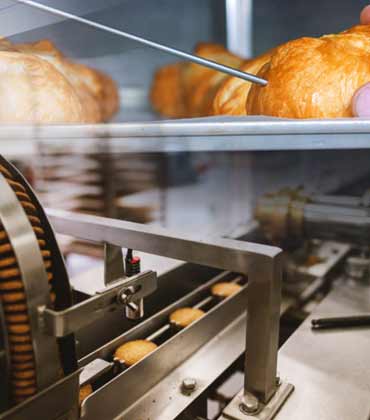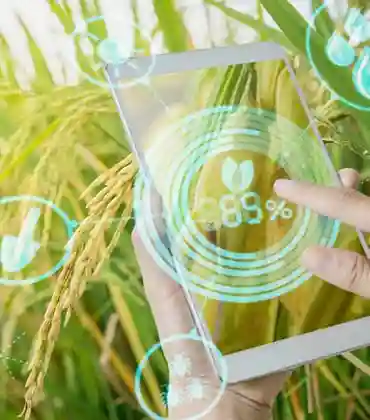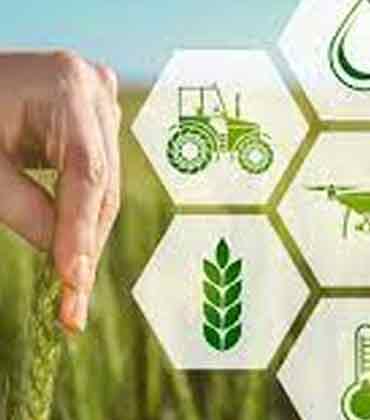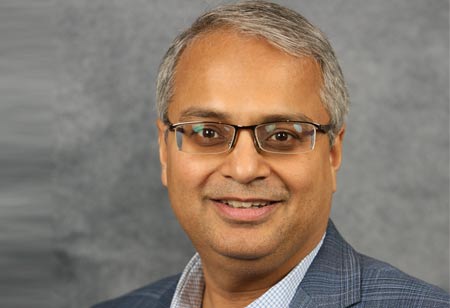THANK YOU FOR SUBSCRIBING
By Ganesh Jayaram, Vice President of Information Technology, John Deere [NYSE: DE]
How the Ag Industry is and has been Driving Automation in...
By Janelle Sallenave, Head Of Uber Eats, Us & Canada At Uber
Uber Eats: Hospitality, And Partnering For The Future Of...
By Dennis Beard, Managing Partner, Serra Ventures
One Investor's View of Investing in Ag Tech Startups
By Carter Williams, CEO and Managing Partner, iSelect Fund
Affordable, Healthy, Scalable: Why 'System C' is the...

Ag-tech is How We'll Solve Some of the Most Pressing Challenges of Our Time
Sriraj Kantamneni, Managing Director, Cargill

 Sriraj Kantamneni, Managing Director, Cargill
Sriraj Kantamneni, Managing Director, CargillSociety is presenting agriculture with a critical challenge: produce 70 percent more food, with only 5 percent more land to feed almost 10 billion people by 2050. To do so, sustainably will require transformational approaches to how we raise crops and animal protein – primarily driven by technology.
Today, agriculture is the least digitalized sector in our global economy, according to McKinsey. The economics of farming can be a barrier, but so can consumer values. In Cargill’s recent Feed4Thought survey, 85 percent of the 3,000 survey participants said ag-tech is how we’ll feed a growing population, make farming more sustainable and improve the lives of farm animals – yet only about half wanted their food to come from a technologically advanced farm.
There is an opportunity to help consumers better understand the value of new technologies, especially when the stakes are so high.
If we think about it, farmers have always improved their technology – from mule to tractor, scythe to the combine. Digital technologies are just the latest iteration. Take knowledge – a critical input for any successful operation. Farmers have long needed to know the weather, their animals, the markets, and the risks they face every day. Now, with the additional knowledge advanced technologies can bring, farmers can make better, faster, more informed decisions. Better decision making is beneficial for the farmer, animals, and the planet.
Already, real-time scans in poultry houses are using Artificial Intelligence (AI) to give farmers insights so they can maximize their animals’ comfort and health and improve efficiency. Smart weather sensors in crop fields, such as those used in the Nebraska water conservation project, will help farmers conserve up to 2.4 billion gallons of irrigation water over three years.
And there’s more to come. There are nine million dairy cows in the U.S., and every one of them is different. Those differences are why companies likeCainthusare investing in computer vision technology.
When farmers have access to real-time data, unique to each animal, they can make more informed decisions. It can improve feed efficiency and water intake, enhance animal well-being and comfort, and ultimately increase milk component yields.
Data is essential, but drawing critical and actionable insights from that data is even more so. Poultry Enteligen© analysis, for example, integrates data on broiler production, feed formulation, bird comfort, and more to help farmers identify undetected problems and opportunities. When we combine this with deep expertise in animal nutrition and production, it will improve predictions, such as productivity and optimal harvest time. That’s why Cargill sees data management as a new area of service in animal nutrition, and why we’ve invested in partners like Brazilian swine technology leader, Agriness.
Recognizing the gap between the promise of ag-tech, producers’ uptake, and consumer acceptance, Cargill has launched the new website FeedingIntelligence.com. Here, producers can learn about the application of new technologies—and other tools to advance productivity, health, and well-being and sustainability—and consumers can read about the benefits. We believe this is worthwhile because agriculture, and the technologies and insights we apply to it, is how we’ll solve some of the most urgent challenges of our time.
Read Also


![Ganesh Jayaram, Vice President of Information Technology, John Deere [NYSE: DE] How the Ag Industry is and has been Driving Automation in Transportation](https://www.fbtechrevieweurope.com/newstransfer/upload/370x420_gOi4.webp)












